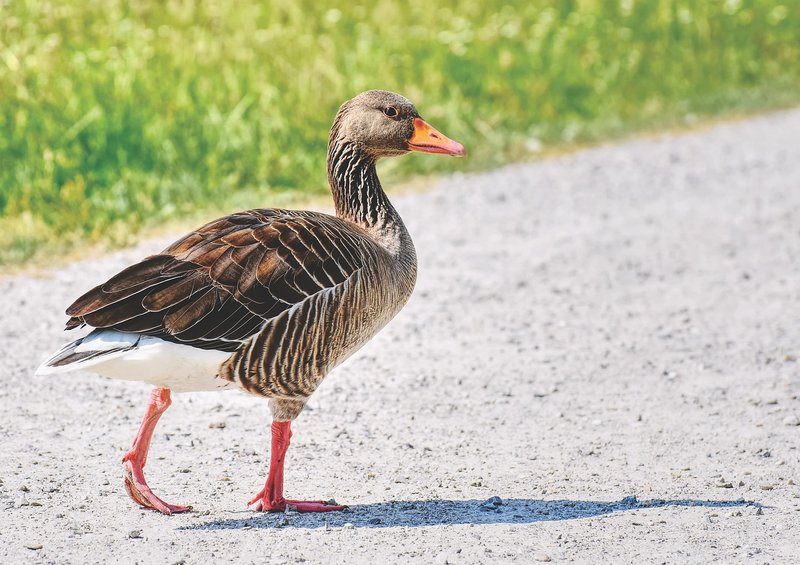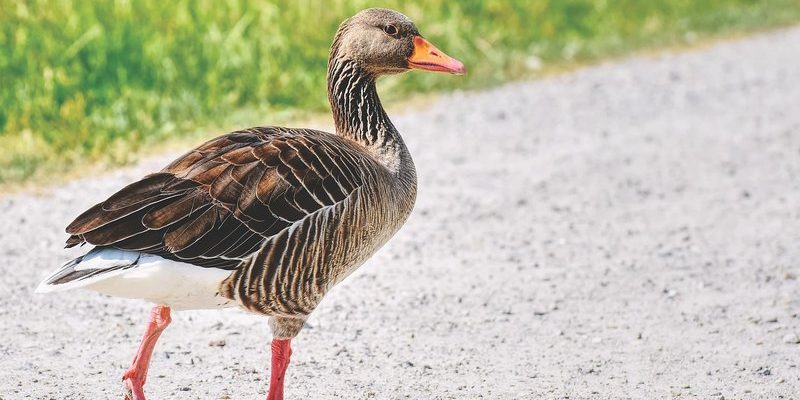
In this article, we’ll dive into ten intriguing facts about geese that might just make you appreciate these birds a little more. From their impressive migration patterns to their unexpected roles in ecosystems, there’s so much to consider. So, pour yourself a cup of coffee, and let’s explore the world of geese together!
1. Geese are Highly Social Animals
You might think of geese as individuals, but in reality, they’re incredibly social creatures. They thrive in groups called flocks, which can range from just a few members to hundreds. These flocks provide not only companionship but also safety in numbers. There’s a familiar saying: “There’s strength in numbers,” and geese take that to heart.
When they’re flying, you’ll often see them in that iconic “V” formation. This isn’t just for show; it’s a brilliant aerodynamic strategy. The lead goose cuts through the wind, creating a slipstream that makes it easier for those following to fly. It’s like having a full-on carpool lane up in the sky! And when the lead goose gets tired, it will switch places with another bird, allowing everyone to take turns at the front. How cool is that?
2. Geese Have Impressive Migration Patterns
Every year, many species of geese embark on long migrations, traveling thousands of miles between their breeding and wintering grounds. For instance, the Canada goose can migrate from Canada to the southern United States, covering a distance of up to 3,000 miles. This journey is often filled with challenges like weather changes and the need to find food and safe resting spots.
The timing of these migrations is influenced by daylight hours and temperature, which means geese are in tune with seasonal changes. They begin their travels when the days start to shorten in the fall, heading south before winter sets in. It’s fascinating how these birds can sense these natural cues. Think about it: they navigate using landforms and even the stars, which is a testament to their remarkable instincts.
3. Geese Communicate in Various Ways
If you’ve ever encountered a flock of geese, you’ve likely heard their loud honking. But did you know that geese have an entire vocabulary? They communicate through sounds, body language, and even visual signals. Each honk can mean something different, conveying emotions and alerting others to danger.
For instance, a honk might signal “let’s stick together,” while another could mean “watch out, there’s a predator nearby.” Their non-verbal cues are just as important. They’ll raise their heads or expand their wings to express dominance or show they’re feeling threatened. It’s almost like a goose version of a conversation, where every sound and gesture carries meaning. Next time you see a gaggle, try to listen to their chatter—who knows what they’re discussing?
4. They Have a Strong Sense of Family
Geese are known for being loyal partners and fantastic parents. They typically mate for life, forming long-term bonds with their partners. Once they have a family, they’re incredibly protective of their goslings. When the eggs hatch, both parents take on the responsibility of caring for the young.
This strong sense of family extends beyond just the parents and their goslings. Geese often stay with their families for a couple of years, helping to raise new generations. It’s a heartwarming aspect of their behavior, showing just how much value they place on kinship. You could say they’re like the ultimate family units—always looking out for their own!
5. Geese Play Vital Roles in Ecosystems
You might not think of geese as important players in their ecosystems, but they actually contribute in significant ways. They help maintain healthy wetland habitats by grazing on plants, which promotes new growth. This isn’t just a service to the environment; it’s crucial for other wildlife that depend on healthy wetlands as well.
Their droppings also play a role in nutrient cycling. While it might not sound glamorous, goose poop is full of nutrients that enrich the soil. This, in turn, supports a variety of plants and animals in the area. So, the next time you see a goose grazing, remember they’re not just munching away—they’re doing their part for the ecosystem!
6. Geese Can Recognize Individuals
Here’s something that might surprise you: geese can recognize individual humans and other animals. They have great memories, especially when it comes to their social interactions. If you’ve ever fed ducks or geese, they might have learned to associate you with food, which is why they may come right up to you.
Interestingly, they can also recognize each other within their flocks. This ability helps maintain social structures and hierarchies. Imagine walking into a room full of people and knowing who your friends are just by looking at them—that’s how geese interact! It’s a reminder of how intelligent these birds truly are.
7. Geese Are Adaptable in Different Environments
You might think geese only thrive in specific habitats like lakes and rivers, but they’re surprisingly adaptable. They can be found in various environments, including urban areas, parks, and farmland. This flexibility is one reason geese populations have flourished in recent years.
In cities, they’ve learned to navigate traffic and crowds, often finding food scraps near lakes and parks. It’s fascinating to see how they’ve adjusted to human presence while still maintaining their natural behaviors. Honestly, watching a goose stroll through a park as if it owns the place is both entertaining and a testament to their adaptability.
8. They Have Unique Lifespan and Lifecycles
Geese typically live for about 10 to 25 years, depending on the species and environmental conditions. Some even reach 30 years in captivity! Their lifespan can be influenced by factors like predators, habitat quality, and food availability.
The life cycle of a goose starts when they mate in early spring, laying eggs that usually hatch in about 28 to 30 days. Once the goslings are born, they’re up and about within hours, ready to explore the world. Watching them waddle around their parents is an adorable sight. The way they grow up and learn essential survival skills alongside their parents makes for a fascinating journey.
9. Geese Have Cultural Significance
Throughout history, geese have held various roles in different cultures. From folklore to festivals, these birds are often seen as symbols of loyalty, teamwork, and family. In ancient Rome, geese were honored and protected because they warned citizens of impending attacks.
In some cultures, they even appear as symbols in art and literature, representing courage and steadfastness. Given their strong familial ties and migratory habits, it’s no wonder they became important figures in various stories. When you think about it, geese have been inspiring humans long before we even embraced birdwatching!
10. They Can Be Quite Vocal
Geese are known for their distinctive honks, but they also make a range of sounds that convey different messages. From soft murmurs to loud quacks, each sound serves a purpose. They’ll honk to communicate with their flock, warn of danger, or even attract a mate.
Interestingly, some species of geese are more vocal than others. The sound of a flock taking off can be quite the orchestra, with each bird adding its unique note to the mix. It’s like they’re putting on a concert just for you! If you ever get the chance to observe them during migration, you’ll likely be treated to a stunning soundscape.
Wrapping up, geese are much more than just common birds we see waddling around parks and ponds. Their complex social structures, impressive migration journeys, and vital roles in ecosystems make them worthy of our admiration. Next time you see a goose, take a moment to appreciate the intricacies of their lives. There’s a lot to learn from these fascinating creatures, and who knows—you might even find yourself rooting for them!

